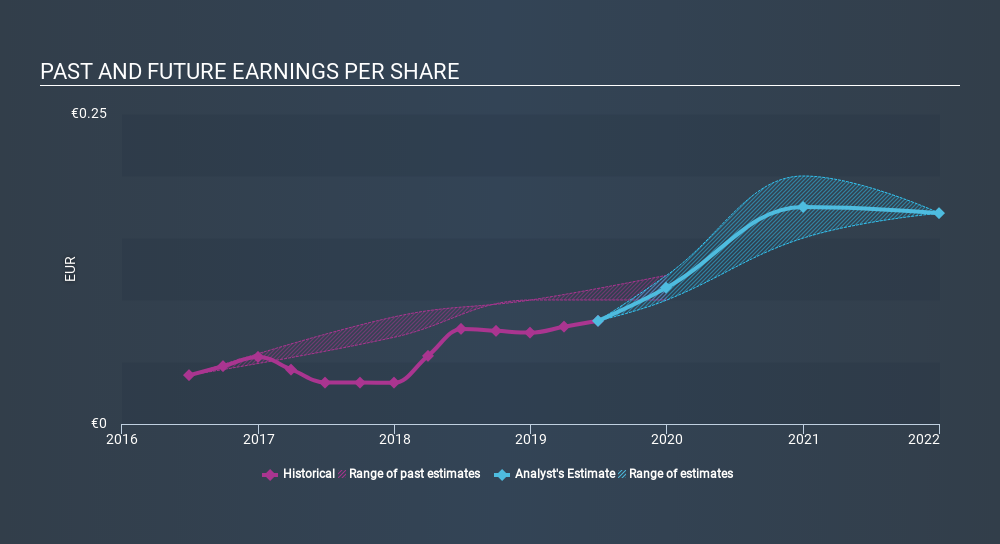- Netherlands
- /
- IT
- /
- ENXTAM:ORDI
Can You Imagine How Ordina's (AMS:ORDI) Shareholders Feel About The 65% Share Price Increase?

Stock pickers are generally looking for stocks that will outperform the broader market. And while active stock picking involves risks (and requires diversification) it can also provide excess returns. For example, the Ordina N.V. (AMS:ORDI) share price is up 65% in the last 5 years, clearly besting the market return of around 36% (ignoring dividends). On the other hand, the more recent gains haven't been so impressive, with shareholders gaining just 48% , including dividends .
See our latest analysis for Ordina
While markets are a powerful pricing mechanism, share prices reflect investor sentiment, not just underlying business performance. By comparing earnings per share (EPS) and share price changes over time, we can get a feel for how investor attitudes to a company have morphed over time.
During the five years of share price growth, Ordina moved from a loss to profitability. That's generally thought to be a genuine positive, so we would expect to see an increasing share price. Since the company was unprofitable five years ago, but not three years ago, it's worth taking a look at the returns in the last three years, too. We can see that the Ordina share price is down 2.5% in the last three years. During the same period, EPS grew by 28% each year. It would appear there's a real mismatch between the increasing EPS and the share price, which has declined -0.8% a year for three years.
You can see how EPS has changed over time in the image below (click on the chart to see the exact values).

While the share price will often move with EPS, other factors can also play a role. For example, we've discovered 1 warning sign for Ordina which any shareholder or potential investor should be aware of.
What About Dividends?
When looking at investment returns, it is important to consider the difference between total shareholder return (TSR) and share price return. The TSR is a return calculation that accounts for the value of cash dividends (assuming that any dividend received was reinvested) and the calculated value of any discounted capital raisings and spin-offs. So for companies that pay a generous dividend, the TSR is often a lot higher than the share price return. In the case of Ordina, it has a TSR of 73% for the last 5 years. That exceeds its share price return that we previously mentioned. And there's no prize for guessing that the dividend payments largely explain the divergence!
A Different Perspective
It's nice to see that Ordina shareholders have received a total shareholder return of 48% over the last year. And that does include the dividend. That's better than the annualised return of 12% over half a decade, implying that the company is doing better recently. Given the share price momentum remains strong, it might be worth taking a closer look at the stock, lest you miss an opportunity. Before deciding if you like the current share price, check how Ordina scores on these 3 valuation metrics.
We will like Ordina better if we see some big insider buys. While we wait, check out this free list of growing companies with considerable, recent, insider buying.
Please note, the market returns quoted in this article reflect the market weighted average returns of stocks that currently trade on NL exchanges.
If you spot an error that warrants correction, please contact the editor at editorial-team@simplywallst.com. This article by Simply Wall St is general in nature. It does not constitute a recommendation to buy or sell any stock, and does not take account of your objectives, or your financial situation. Simply Wall St has no position in the stocks mentioned.
We aim to bring you long-term focused research analysis driven by fundamental data. Note that our analysis may not factor in the latest price-sensitive company announcements or qualitative material. Thank you for reading.
About ENXTAM:ORDI
Ordina
Ordina N.V. provides IT services in the Netherlands, Belgium, and Luxembourg.
Reasonable growth potential with adequate balance sheet.
Similar Companies
Market Insights
Community Narratives



